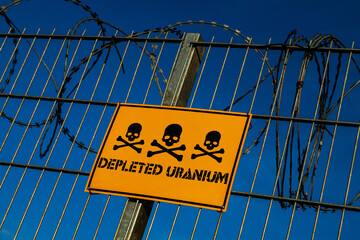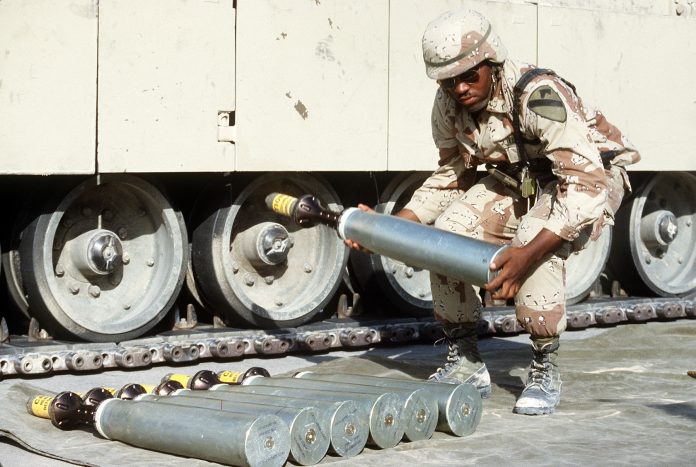
“We have to destroy Ukraine to save it.”
White House Set To Approve
Depleted Uranium Munitions For Ukraine
Tyler Durden / ZeroHedge
WASHINGTON (June 13, 2023) — The Biden administration is set to transfer depleted uranium shells to Ukraine for the first time since the Russian invasion began The Wall Street Journal reports.
Internal administration debate over the controversial munitions has been ongoing for several months, but an admin official quoted in WSJ says at this point there are “no major obstacles” to sending it, which will be used to equip M1 Abrams tanks provided by Washington.
This came at the request of the Ukrainians themselves: “The Pentagon has urged that the Abrams tanks the US is providing Ukraine be armed with depleted-uranium rounds, which are regularly used by the US Army and are highly effective against Russian tanks,” WSJ writes.
Already the UK has been providing armor piercing rounds that contain depleted uranium for its Challenger 2 main battle tanks. This was first announced by Britain’s defense ministry in late March.
The condemnation from the Kremlin in response to London was swift, with a Russian foreign ministry statement at the time saying it was tantamount to using a “dirty bomb” — given the highly dangerous remnant health effects on the battlefield.
While the UK defense ministry asserted that “Such rounds are highly effective in defeating modern tanks and armored vehicles,” Moscow responded, “These shells not only kill, but infect the environment and cause oncology in people living on these lands.”
There have been ongoing attempts over the years of international watchdogs to get depleted uranium shells banned by international treaty. EU parliament, for example, has long pushed for a ban.

A defense analyst cited in the fresh WSJ report describes why they are so sought after by Ukrainian forces:
“The projectile hits like a freight train,” said Scott Boston, a defense analyst at the Rand Corporation and former Army artillery officer. “It is very long and very dense. So it puts a great deal of kinetic energy on a specific point on an enemy armor array.”
But, as the report also notes, “The proposal has been debated at the White House, where some officials have expressed concern that sending the rounds might open Washington to criticism that it was providing a weapon that may carry health and environmental risks.”
It is the “chemical toxicity” of the metals used which poses the biggest danger, also as upon explosion it is turned into toxic dust which is dispersed on the battlefield and can have a permanent presence.
According to a summary of the hazardous weapons technology in the journal Scientific American:
Used as ammunition, it penetrates the thick steel encasing enemy tanks; used as armor, it protects troops against attack. And when it was used in the Gulf War and later during the Allied bombing of Yugoslavia and Kosovo, depleted uranium (DU) was hailed as the new silver bullet that would solve most of the military’s problems.
After the end of Operation Allied Force, however, several Italian soldiers were diagnosed with leukemia. Politicians and the media soon forged a link between the disease and depleted uranium use. They further drew a parallel with Gulf War Syndrome, and in no time, depleted uranium became the Agent Orange of the Balkan conflict.
Russia will likely pursue its own form of escalation in response to the US decision. When the UK previously announced its authorization for depleted uranium, President Putin said he would station tactical nuclear weapons in Belarus.
Putin had justified the move toward nuclear escalation very specifically in response to London’s decision at the time. But Washington has of course downplayed and rejected the association of depleted uranium shells with ‘nuclear weapons’.
Posted in accordance with Title 17, Section 107, US Code, for noncommercial, educational purposes.
